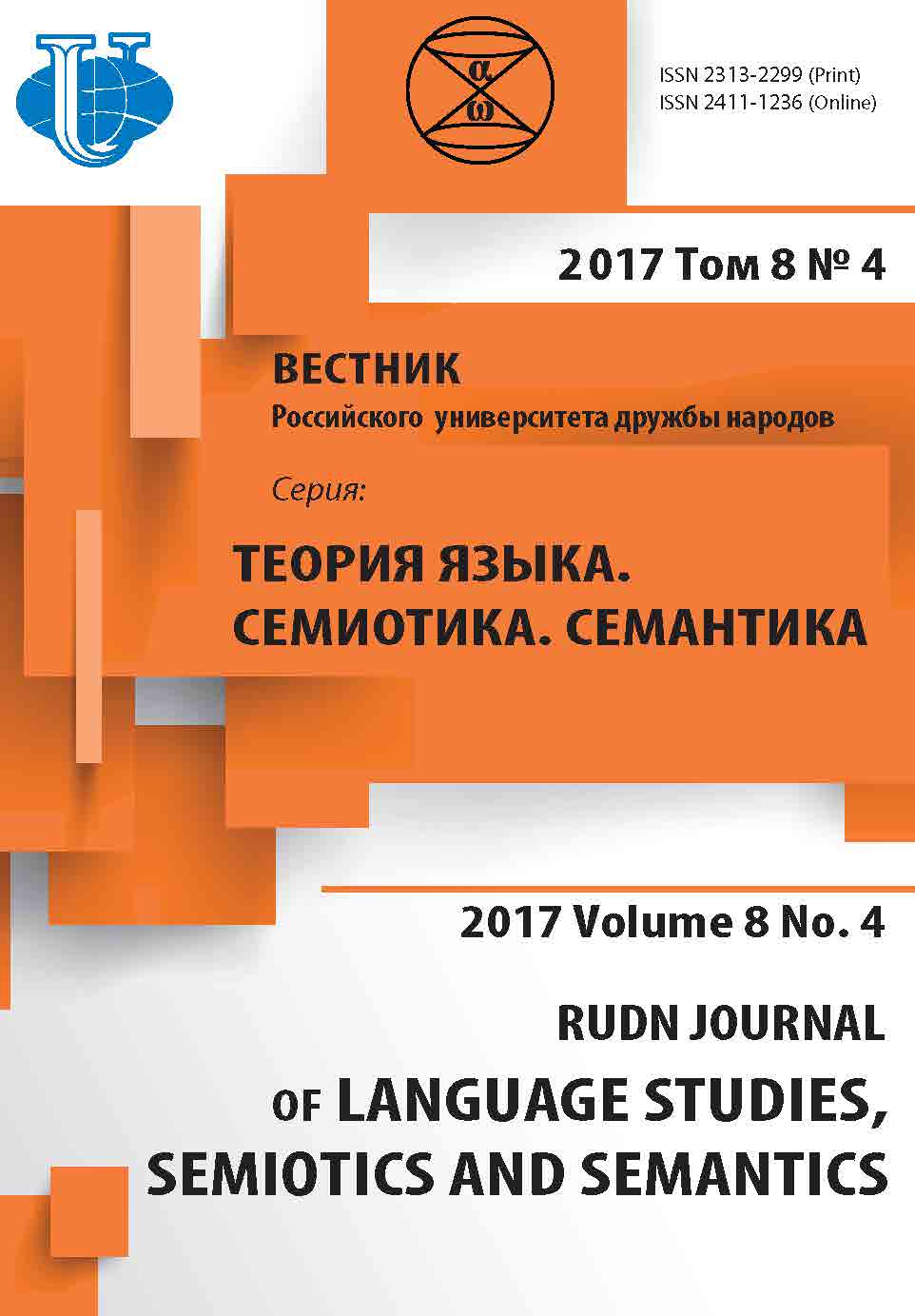TRANSLATING IDIOMS OF COLOUR (an Examination of the Relationship of Idioms of Colour Between English, Arabic and Spanish Languages)
- Authors: Fityan Reema -1, Azcutia Maite -1
-
Affiliations:
- RUDN University
- Issue: Vol 8, No 4 (2017)
- Pages: 930-938
- Section: ARTICLES
- URL: https://journals.rudn.ru/semiotics-semantics/article/view/17971
- DOI: https://doi.org/10.22363/2313-2299-2017-8-4-930-938
- ID: 17971
Cite item
Full Text
Abstract
Nowadays, human communication is considered to be one of the most important topics occupying the minds of linguists, anthropologists, psychologists, and philosophers. Since it is the most important means for communication among human beings, the relation between language, history, culture, worldview and their mutual interactions have high significance. The inextricable connection highlights different indications of conventionalized language including the idiomatic expressions as one of the important and pervasive language uses reflecting culture in real life. Like different sorts of figurative language, idioms give off an impression of being the common decoders of traditions, social convictions, social traditions, and standards. Idioms, as a major component of native-like correspondence, empower a language learner to comprehend the thoughts, feelings and perspectives of the speakers of target language. Therefore, learning idioms provides learners a good opportunity to get data about the basic parameters of a language.
About the authors
- Fityan Reema
RUDN University
Author for correspondence.
Email: r.m.fityan@gmail.com
Fityan Reema, Graduated in MA Studies “Theoretical and Applied Linguistics” from RUDN University; research interests: translation, intercultural communication, linguistics
6, Miklukho-Maklaya Str., Moscow, Russia, 117198- Azcutia Maite
RUDN University
Email: maiteazcutia@gmail.com
Azcutia Maite, Graduated in Translation and Interpreting from the University of the Basque Country, mayored in English and Russian; research interests: song translation, theory of translation, linguistics
6, Miklukho-Maklaya Str., Moscow, Russia, 117198References
- Akbari, M. (2013). Strategies for Translating Idioms. URL: https://fr.scribd.com/doc/219484811 / Strategies-for-Translating-Idioms (accesse d: 08.08.2016).
- Al-Adaileh, B. The connotations of arabic colour terms. URL: http ://www.phil.muni.cz/ linguistica/art/al-adaileh/ada -001.pdf (accessed: 07.01.2017).
- Bell, R. (1991). Translation and translating. London: Longman.
- Hester, S. & Eglin, P. (1997). Culture in Action: Studies in Membership Categorization.
- Hongwei, C. (1999). Cultural difference and translation. Translations' Journal, 44, 121—132.
- House, J. (2009). Translation. Oxford: Oxford Un iversity Press.
- Katan, D. (1999). Translating Cultures: An Introduction for Translators, Interpreters and Mediators. Manchester: St Jerome.
- Katan, D. (2009). Translation as Intercultural Communication. In J. Munday (Ed.), The Routledge companion to translation studies (pp. 74—92). Abingdon: Routledge.
- Lambert, J. (2000). Cultural Studies, The Study of Cultures and The Question of Language : Facing / Exclu ding in New Millennium. In D. Delabastita, L. D'hulst, & R. Meylaerts (2006), Functional approach to culture and translation (pp. 163—172). Amsterdam: John Benjamin s Lar sen, M. (1984).
- Leppihalme, R. (1997). Culture bumps. Clevedon: Multilingul Matters.
- Munday, J. (2001). Introducting translation studies. Routledge 270 Madison Ave, New York, NY 10016.
- Newmark, P. (1988). A textbook of translation. Hamel Hempstead: Prentice Hall.
- Nida, E. & Taber, C. (1969). The theory and practice of translation. Leiden: E.J. Brill.
- Paluszkiewicz-Misiaczek, M. (2005). Strategies and methods in dealing with culture specific expressions on the basis of Polish-English translations of certain administrative and institutiona l terms. Th eory and Practice in English Studies, 3, 243—248.
- Reddick, R. (1992). English expository discourse. Language in Context: Essays for Robert E. Longacre, Shin Ja J., Hwang and W.R. Merrifield (Eds), Arlington: The Summer Institute of Linguistics and The University of Texas at Arlington.
- Salehi, M. (2012). Reflections on Culture, Language and Translation. URL: http://www.ipedr.com/ vol33/017-ICLMC2012-L00062.pdf (accessed: 05.01.2017).
- Vasiljevic, Z. (2015). Effects of Etymology and Pictorial Support on the Retention and Recall of L2 Idioms. Electronic Journal of Foreign Language Teaching, 12(1), 35—55. URL: http://e-flt.nus.edu.sg/v12n12015/vasiljevic.pdf (accessed: 09.09.2016).
- Vega-Moreno, R.E. Representing and processing idioms. URL: http://www.phon.ucl.ac.uk/ publications/WPL/01papers/vega.pdf (accessed: 05.01.2017).
- Venuti, L. (1995). The Translator's Invisibility: A history of translation. London and New York: Routledge.
- Xing, J.Z. (2008). Semantics and Pragmatics of Colour Terms in Chinese. Washington: Western Washington University.
- Yağiz, O. & Izadpanah, S. Language, Culture, Idioms, and Their Relationship with the Foreign Language. Journal of Language Teaching and Research, Vol. 4(5), 953—957. URL: http://www.academypublication.com/issues/past/jltr/vol04/05/07.pdf (accessed: 09.09.2016).
Supplementary files












